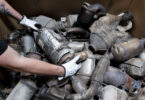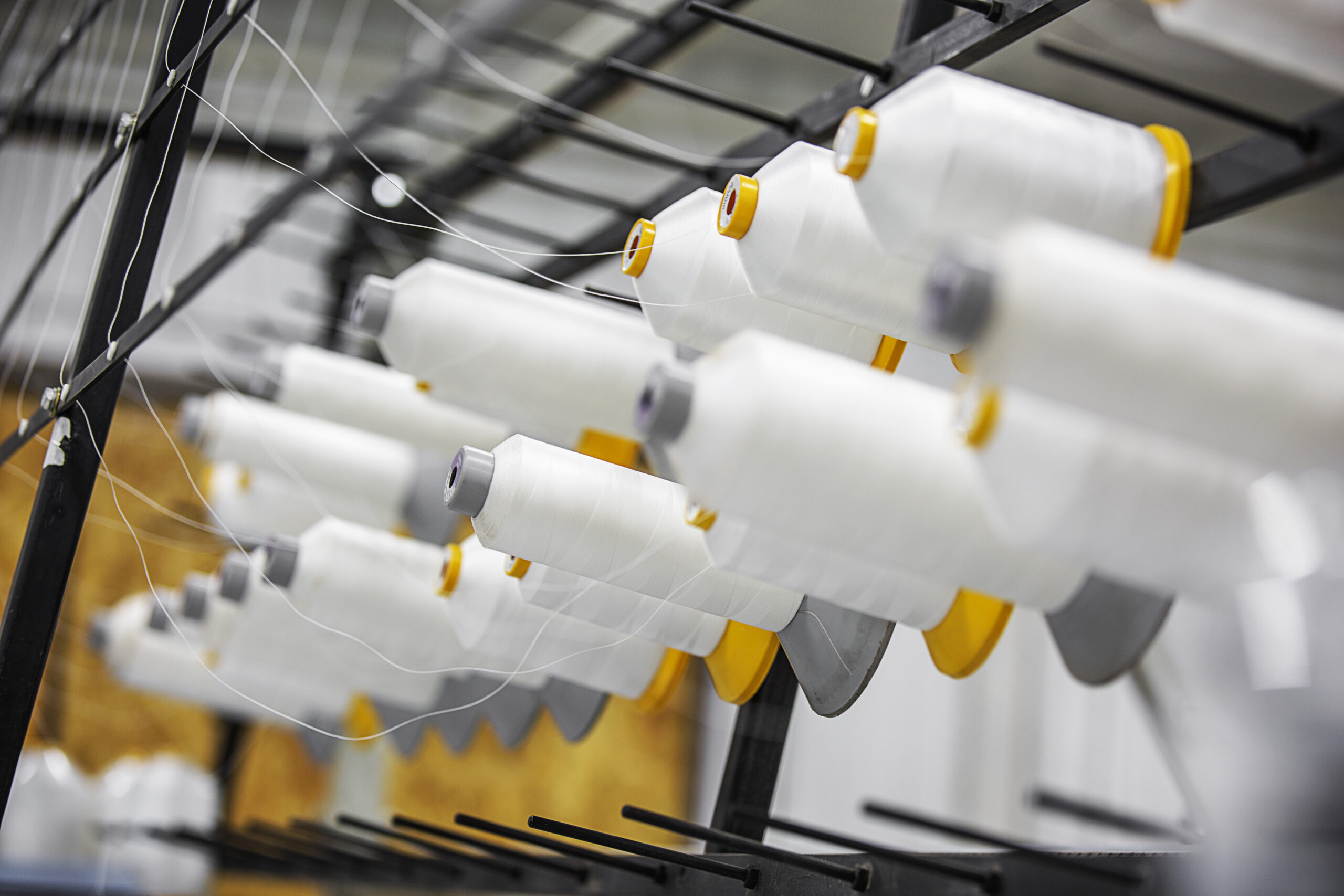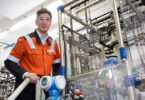Eight supply chains – freight, food, construction, fashion, fast-moving consumer goods, electronics, automotive, professional services – account for more than half of all global greenhouse gas emissions.
Each company and industry faces its own unique decarbonization challenges, but organizations across the board are struggling to meet their targets. A Bain & Company November analysis finds that more than 20% of companies are not on track to reach their reduction targets for the Scope 1 emissions generated by assets they own and operate, or the Scope 2 emissions generated by purchased electricity and fuel. And, importantly, more than a third may not meet their planned reduction of upstream Scope 3 supplier emissions.
That is where global logistics provider DHL comes in. In addition to taking steps to cut its own emissions the company is taking a leading role in helping other large corporates go green. Last April DHL, which moves hundreds of billions of dollars worth of freight each year by ocean, air, and land, gathered a 1000 of its global customers from all sectors in Valencia, Spain to create “a community of collective action,” says Carsten Luetzenkirchen, Senior Vice President of Commercial Operations, DHL Customer Solutions and Innovation.
“All companies have realized they need to cut emissions and this means looking at all the processes in their entire supply chain,” he says. “It is a very significant undertaking. They need to rethink and review everything, including the way they design products and their logistics, but there are so many unknowns.”
The Era of Sustainable Logistics Global Summit 2023 in Valencia covered various decarbonization steps including governance, digitalization, and strategy. “We had experts in all these areas so that people could learn in a short time frame,” Luetzenkirchen says. “The biggest feedback we got was that this helped them to know how to make the right decisions.”
Since April DHL has organized a similar conference in the Middle East and has plans to organize one in Asia.
DHL, part of the DHL Group, also used the Valencia summit to highlight its own sustainability milestones, including the deployment of electric vehicles, the purchase of sustainable aviation fuel (SAF), the transformation and construction of carbon-neutral buildings, and the expansion of new green services.
The company is leveraging a variety of technologies for its sustainability program, including loT devices and tracking solutions for real-time visibility in shipments and to boost supply chain transparency. It has integrated robotics and automation technologies to streamline warehouse operations, minimize human error, and enhance overall operational efficiency; uses Big Data analytics to optimize demand forecasting, route planning, and overall supply chain management; is exploring blockchain technology, which contributes to improved traceability, security, and authenticity of transactions and documents within the logistics process; and embracing eco-friendly packaging, energy-efficient transportation options, and other environmentally responsible logistics practices.
The Group’s 2050 Mission seeks to achieve Net-Zero emissions by 2050 and has a target of spending up to 7 billion euros, the equivalent of roughly $7.4 billion, on decarbonization by 2030.
It Starts With Transparency
Companies of all sizes are struggling to get the data they need and to set clear targets and standards not just for themselves but also for their suppliers.
“The first step is to get to transparency and understand where emissions are coming from,” says Luetzenkirchen. “What we have done is harmonized the way we calculate emissions across all our modes of transport, across the globe,” he says. “To get there we needed to align internally. That work has been done. The next iteration will be to expand on using more primary fuel and energy usage data to determine emissions and be as granular and direct as possible.”
DHL has transformed the process it developed for calculating emissions into a service for its customers. During the Valencia summit DHL launched a new emissions reporting tool – the GoGreen Dashboard – to provide transparency based on recognized industry standards such as the recently published ISO 14083. The GoGreen platform is customizable and free of charge.
Burning Cleaner Fuels
A significant portion of DHL’s supply chain emissions come from logistics so the next step in the decarbonization process is to look at sustainable transport options that “burn clean”, says Luetzenkirchen.
Last year, DHL ordered up to 12 fully electric cargo aircraft, expanded its delivery fleet to now over 30,000 e-vehicles worldwide and acquired 60 million liters of sustainable marine fuel. Last year, it also secured over 830 million liters of sustainable aviation fuel (SAF) until 2026, and in 2023 the company secured another 668 million liters until 2030.
“What we do is look at the different transport modes and leverage what is available on the market to pilot new technologies with our partners,” he says. “For us the long-term view on trucking, for example, is electrification -not only for local deliveries but for long-range -but this will take a long time because the battery capacity and loading infrastructure is not there. In the interim we need to bridge the gap with biofuels,” such as Hydrogenated Vegetable Oil (HVO), a renewable diesel which can be produced from various vegetable oils and fats. DHL is already using HVO powered trucks to distribute goods for Tesco in Ireland and using electric trucks for some deliveries in the U.K. and trucks powered by biogas fuel for longer range trips.
The biggest proportion of DHL’s emissions come from its Express business, i.e., express air freight. The company aims to have 30% of fuel blending with SAF by 2030, he says. It is a tall order as there simply isn’t enough SAF on the market right now. DHL purchased 18% of all available SAF in 2022 but that equated to only 1% of the fuel that the company’s airplanes burned. “We continue to negotiate multi-year demand contracts so that suppliers have a basis to scale production he says.
Here too, DHL is leveraging its own decarbonization program to help its customers reduce their carbon emissions.. Over the last three years, DHL has launched GoGreen Plus, a service that allows customers to reduce (‘inset’) the carbon emissions associated wtih their shipments, to all the main core services: ocean freight, air freight, air express as well as road freight. In February DHL launched an additional option that allows customers to reduce (‘inset’) the carbon emissions associated with their shipments through the use of SAF, with customers being given the chance to tailor the CO2 reduction they want to achieve and the amount of SAF they use.
The new GoGreen Plus service was made possible by DHL’s collaborations with partners, like bp and Neste, to supply SAF to DHL Express hubs around the world. The renewable part of the innovative fuel is produced primarily from biogenic waste SAF from wastes and residues can provide greenhouse gas emission reductions of up to 80% over its lifecycle compared with the conventional jet fuel it replaces.
Customers such as Novo Nordisk, are buying SAF from DHL. “This helps us to share the cost of the SAF,” which currently is priced two to four times that of regular airplane fuel, says Luetzenkirchen.
Insetting through GoGreen Plus allows customers to bring down their Scope 3 emissions, the indirect greenhouse gas emissions that occur in a company’s value chain, including downstream transportation and distribution. Unlike offsetting initiatives, GoGreen Plus (insetting) reduces emissions within the logistics sector and can be used for DHL customers’ own voluntary emission reporting.
We Have To Start Now
The technology is there to transform all transport modes, but it requires scale, and the scale is not there, says Luetzenkirchen. “The infrastructure to charge electric trucks has to be built, there is not enough SAF, and the same is true for renewable energy,” he says. “Investments to scale the tech needs to happen along with a willingness to absorb the premiums. These are the main challenges.”
There is no time to lose, says Luetzenkirchen. “We can’t wait on government to make it mandatory. The push needs to come from industry as a collective measure. My message is don’t wait for the Next Big Thing in technology. There are solutions available. We need to start now. “
To access more of The Innovator’s Going Green articles click here.






